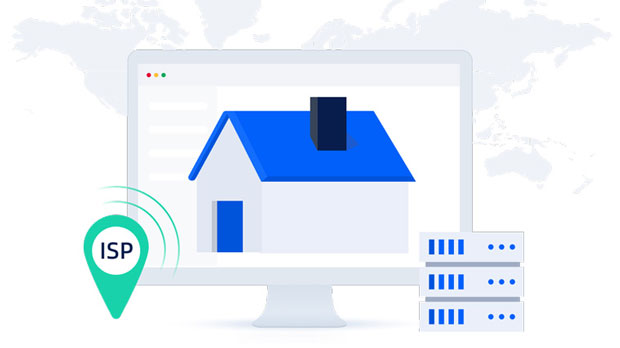In today’s digital age, reliable proxy services are vital for ensuring uninterrupted internet browsing, online scraping, and data collection tasks. Two of the leading services in the proxy market—privateproxy and PYPROXY—have gained significant attention for their long-term connection stability, especially when using static ip proxies. Static IP proxies are highly sought after because they provide a consistent and unchanging IP address, which is crucial for tasks that require sustained online operations. This article will analyze both privateproxy and pyproxy’s capabilities, strengths, and weaknesses when it comes to maintaining a stable, long-term connection. What Are Static IP Proxies?Before diving into the comparison, it’s essential to understand what static IP proxies are and why they matter. Static IP proxies use a fixed IP address that does not change over time. This is in contrast to dynamic IP proxies, where the IP address changes frequently. Static IP proxies are essential for users who need consistent and reliable access to a specific IP address, such as for managing online accounts, accessing geo-restricted content, or performing web scraping tasks.privateproxy Overviewprivateproxy is a well-known proxy service provider offering both residential and data center proxies, including static IP options. Known for its simplicity and efficiency, privateproxy allows users to set up and use proxies quickly without complicated configurations. It is widely praised for its excellent customer support and fast response times, making it an attractive option for businesses and individual users alike.pyproxy Overviewpyproxy, on the other hand, specializes in providing high-quality private proxies, with a focus on long-term stability and security. Their proxies are particularly designed for users who need consistent performance for long-duration tasks. pyproxy is known for its focus on ensuring privacy and anonymity, making it a trusted provider for users who prioritize security and confidentiality.Connection StabilityOne of the most critical aspects of evaluating proxies is their connection stability. For tasks that require uninterrupted connections, such as long-running web scraping jobs, social media management, or online gaming, both privateproxy and pyproxy offer solutions, but with differing results.privateproxy is generally known for offering decent stability under normal usage, but during extended use, users have reported occasional connection drops or slowdowns, particularly if the user’s tasks involve high amounts of data or multiple simultaneous connections. privateproxy’s connection stability is also affected by the quality of the IP pool, as some IPs may be more prone to issues than others.pyproxy, by contrast, tends to offer better long-term connection stability. Their static IP proxies are specifically designed for reliability and are known to stay connected for extended periods without interruptions. pyproxy also has a robust infrastructure that minimizes downtime and ensures that the connection remains stable even during peak usage times. For users with demanding tasks, pyproxy’s reliability is often the preferred choice.Speed and PerformanceWhile connection stability is important, speed also plays a significant role in determining the effectiveness of a proxy service. Slow proxies can lead to delays in task completion, frustrating users who depend on speed for their online operations.privateproxy offers good speeds for most users, especially with data center proxies, which tend to be faster than residential ones. However, since privateproxy relies on shared proxy pools, there can be occasional speed fluctuations, especially if multiple users are using the same IP range. In general, privateproxy is suitable for tasks that don’t require extremely high-speed connections.pyproxy, on the other hand, generally offers more consistent and faster speeds due to its dedicated private proxies. Since each user is assigned a private proxy, there is no competition for bandwidth, which results in more stable and faster speeds, particularly for users performing high-demand tasks such as streaming, gaming, or large-scale web scraping.Security and PrivacyWhen using proxy services, security and privacy are paramount. Users need to be sure that their data is safe and that their browsing activity is anonymous.privateproxy’s residential proxies are relatively secure, but users should be cautious when using its data center proxies, as they may not provide the same level of anonymity and security. privateproxy does offer encryption for data transmission, but users must take extra care to ensure that sensitive tasks are conducted through secure channels.pyproxy excels in privacy and security. Their proxies are designed with encryption and enhanced security protocols to ensure that users remain anonymous. pyproxy also ensures that no data is logged, which is particularly valuable for users who are concerned about their online footprint and privacy.Pricing and PlansPricing is always a critical consideration when choosing a proxy provider. Both privateproxy and pyproxy offer competitive pricing, but their pricing models differ.privateproxy offers more flexible pricing plans, which can be ideal for individuals or small businesses looking for affordable options. Their packages cater to different user needs, and they also provide pay-as-you-go models that allow for a customized experience based on usage volume.pyproxy, on the other hand, tends to be a bit more expensive, primarily because of the higher quality and reliability of their services. pyproxy’s focus on private proxies and long-term stability makes it a better choice for larger enterprises or users who require top-notch reliability and performance.Customer SupportCustomer support is another vital factor in choosing a proxy provider. When issues arise, responsive and effective support can make a significant difference.privateproxy is known for its responsive customer support. Users can expect timely assistance and are provided with various communication channels to resolve any issues. However, there have been occasional reports of delays in response times, particularly during peak periods.pyproxy provides excellent customer support, with a reputation for offering quick and professional assistance. Their support team is available 24/7, ensuring that users can get help whenever needed. Additionally, pyproxy provides a comprehensive FAQ section and resources for self-help, which can be helpful for users who want to troubleshoot on their own.In conclusion, both privateproxy and pyproxy offer solid solutions for users seeking static IP proxies with long-term connection stability. However, when comparing the two, pyproxy generally provides a more reliable and stable connection over extended periods, especially for users with high-demand tasks. privateproxy offers decent performance and flexibility, making it a good option for users with lighter needs. However, for users who prioritize speed, reliability, and security, pyproxy stands out as the better choice.Ultimately, the decision depends on the user’s specific needs. If you’re looking for affordability and flexibility, privateproxy might be your best bet. However, if you require the utmost in stability, security, and privacy for long-term tasks, pyproxy is the superior option.
Oct 12, 2025



































































